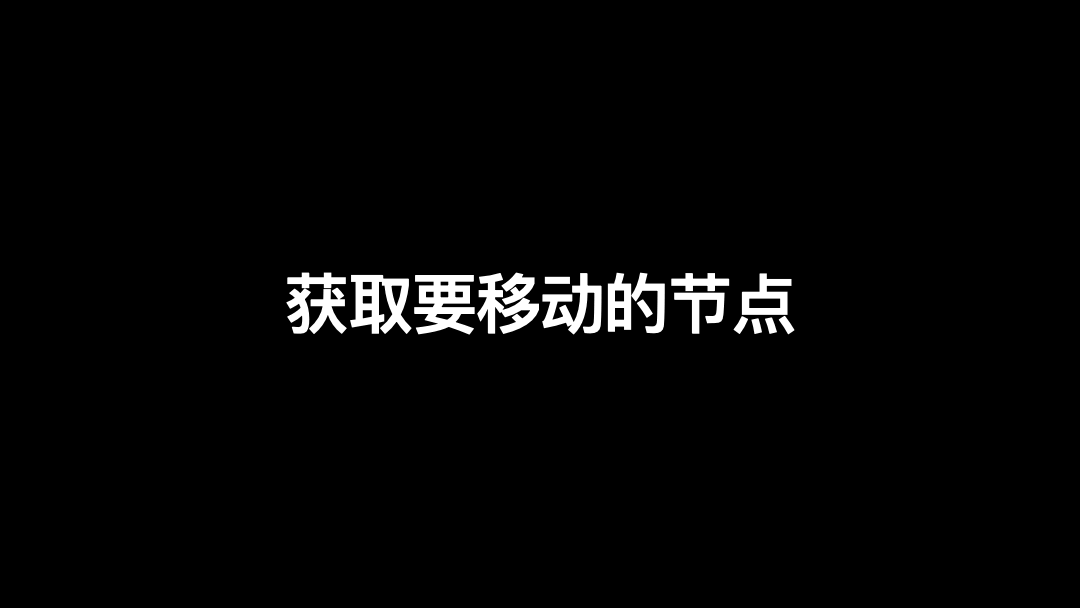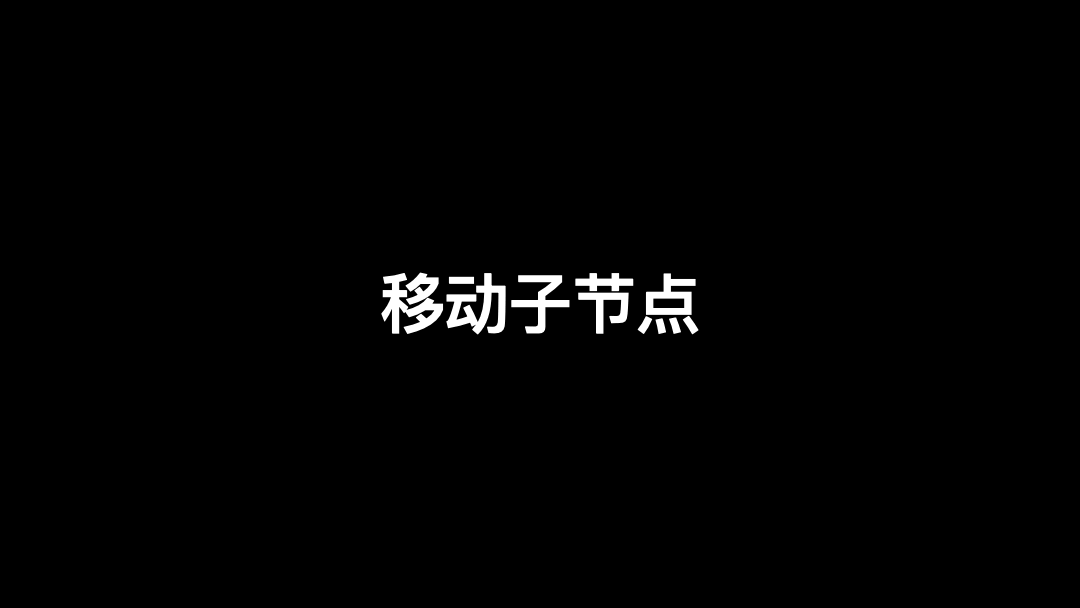在本小节中,我们将会去实现 array => array 中间对比的最复杂的情况:
- 移动节点
- 新增节点
const prevChildren = [
h('p', { key: 'A' }, 'A'),
h('p', { key: 'B' }, 'B'),
h('p', { key: 'C' }, 'C'),
h('p', { key: 'D' }, 'D'),
h('p', { key: 'E' }, 'E'),
h('p', { key: 'F' }, 'F'),
h('p', { key: 'G' }, 'G'),
]
const nextChildren = [
h('p', { key: 'A' }, 'A'),
h('p', { key: 'B' }, 'B'),
h('p', { key: 'E' }, 'E'),
h('p', { key: 'C' }, 'C'),
h('p', { key: 'D' }, 'D'),
h('p', { key: 'F' }, 'F'),
h('p', { key: 'G' }, 'G'),
]- 旧节点:A B C D E F G
- 新节点:A B E C D F G
- 通过新旧对比我们发现,最终需要移动 E 的位置就好了
一种暴力解法:
- 获取到混乱的部分,最终全部重排,虽然也是能够实现最终的效果的
- 但是性能有很大的浪费,因为调用 DOM API 的性能是非常差的,所以我们还是需要一种算法,来找到最精准的点。
在 Vue 3 中,使用了最长递增子序列的方式来获取到了稳定的序列(也就是不会变的)序列,举个例子:
- 老节点:B C D
- 新节点:D B C
- 其中
B和C保持着一种稳定序列的关系,即 B 永远是在 C 的前面 - 最长递增子序列的算法就是去找到某个序列中最长的稳定序列。
通过 getSequence 获取递增序列的在混乱部分中的索引:
- 得到旧节点混乱部分的索引:C D E -> 2 3 4
- 得到新节点混乱部分的索引:E C D 每一项对应旧节点最终得出是:4 2 3
- 调用
getSequence来获取到最长递增子序列在原数组中的索引是1 2 - 对比新节点第一项 E 对应的混乱索引是 0,在最长递增子序列中不存在
- 表示要移动
我们需要一个映射用于储存每一项在旧节点中的索引
// 储存旧节点混乱元素的索引,创建定长数组,性能更好
const newIndexToOldIndexMap = new Array(toBePatched)
// 循环初始化每一项索引,0 表示未建立映射关系
for (let i = 0; i < toBePatched; i++) newIndexToOldIndexMap[i] = 0对每一项建立索引,我们在确定旧节点在新节点存在,并 patch 的时候,对每一项节点储存一下索引
// 遍历老节点循环体中,此时 i = 当前遍历的老节点元素的索引
if (newIndex === undefined) {
hostRemove(prevChild.el)
} else {
// 确定新节点存在,储存索引映射关系
// newIndex 获取到当前老节点在新节点中的元素,减去 s2 是要将整个混乱的部分拆开,索引归于 0
// 为什么是 i + 1 是因为需要考虑 i 是 0 的情况,因为我们的索引映射表中 0 表示的是初始化状态
// 所以不能是 0,因此需要用到 i + 1
newIndexToOldIndexMap[newIndex - s2] = i + 1
patch(prevChild, c2[newIndex], container, parentInstance, null)
patched += 1
}在最后的部分,我们需要对索引映射进行处理,首先,我们需要调用 getSequence 来获取最长递增子序列在原数组中的索引
// 最后部分
// 获取最长递增子序列索引
const increasingNewIndexSequence = getSequence(newIndexToOldIndexMap)
// 需要两个指针 i,j
// j 指向获取出来的最长递增子序列的索引
// i 指向我们新节点
let j = 0
for (let i = 0; i < toBePatched; i++) {
if (i !== increasingNewIndexSequence[j]) {
// 移动
console.log('移动位置', c2[i + s2])
} else {
// 不移动
console.log('不移动', c2[i + s2])
j += 1
}
}此时结合我们最开始的例子,就可以得出:
- E,移动位置
- C、D 不移动位置
如果此时你发现直接顺序遍历,可能会出现很奇怪的情况,例如我们看看另一种情况:
- 旧节点:A B C D E F G
- 新节点:A B E C D F G
- 我们按照顺序去循环新节点,虽然找到第一个要移动的 E 了,但是由于我们是通过
insertBefore来实现的,需要一个锚点,此时我们的锚点就是就是C(因为他是混乱元素的第一个),但是我们在当前的循环中,我们并不知道C是移动还是不移动,直接插入到C元素之前是不可取的的行为。我们需要找到一个稳定的元素,就是最终的F - 所以我们需要更改最终遍历的顺序,我们要倒序进行遍历。
let j = increasingNewIndexSequence.length - 1
for (let i = toBePatched - 1; i >= 0; i--) {
// 获取元素的索引
const nextIndex = i + s2
// 获取到需要插入的元素
const nextChild = c2[nextIndex]
// 获取锚点
const anchor = nextIndex + 1 < l2 ? c2[nextIndex + 1].el : null
if (i !== increasingNewIndexSequence[j]) {
// 移动
hostInsert(nextChild.el, container, anchor)
} else {
j -= 1
}
}最后,这个判断可以来优化一下:
if (i !== increasingNewIndexSequence[j]) {
// 移动
hostInsert(nextChild.el, container, anchor)
} else {
j -= 1
}变成
// 增加 j <= 0 判断
if (j <= 0 || i !== increasingNewIndexSequence[j]) {
// 移动
hostInsert(nextChild.el, container, anchor)
} else {
j -= 1
}其实我们还是有优化的点的,如果说我们的新旧节点对比不需要移动,那么再去判断最长递增子序列就没有必要了。那么这个该如何判断呢?其实我们只需要判断节点是一直在递增的就可以了,如果节点是一直有递增关系的,那么就不需要移动,如果没有递增关系,那么就可以理解为是需要移动的。
增加两个变量
// 应该移动
let shouldMove = false
// 目前最大的索引
let maxNewIndexSoFar = 0if (newIndex === undefined) {
hostRemove(prevChild.el)
} else {
// 在储存索引的时候
// 判断是否需要移动
// 如果说当前的索引 >= 记录的最大索引
if (newIndex >= maxNewIndexSoFar) {
// 就把当前的索引给到最大的索引
maxNewIndexSoFar = newIndex
} else {
// 否则就不是一直递增,那么就是需要移动的
shouldMove = true
}
newIndexToOldIndexMap[newIndex - s2] = i + 1
patch(prevChild, c2[newIndex], container, parentInstance, null)
patched += 1
}然后在计算最长递增子序列的时候进行判断,如果应该移动,那么就计算,如果不应该移动,直接给定一个空数组就好了
const increasingNewIndexSequence = shouldMove
? getSequence(newIndexToOldIndexMap)
: []
for (let i = toBePatched - 1; i >= 0; i--) {
const nextIndex = i + s2
const nextChild = c2[nextIndex]
const anchor = nextIndex + 1 < l2 ? c2[nextIndex + 1].el : null
// 在这里也进行一个判断
if (shouldMove) {
if (j < 0 || i !== increasingNewIndexSequence[j]) {
hostInsert(nextChild.el, container, anchor)
} else {
j -= 1
}
}
}const prevChildren = [
h("p", { key: "A" }, "A"),
h("p", { key: "B" }, "B"),
h("p", { key: "C" }, "C"),
h("p", { key: "E" }, "E"),
h("p", { key: "F" }, "F"),
h("p", { key: "G" }, "G"),
];
const nextChildren = [
h("p", { key: "A" }, "A"),
h("p", { key: "B" }, "B"),
h("p", { key: "E" }, "E"),
h("p", { key: "C" }, "C"),
h("p", { key: "D" }, "D"),
h("p", { key: "F" }, "F"),
h("p", { key: "G" }, "G"),
];- 旧节点:A B C E F G
- 新节点:A B E C D F G
- 对比新旧节点我们发现,需要移动 E 的位置,同时创建 D
在这里我们的主要逻辑其实就已经实现完毕了,因为我们建立了一个索引映射表,如果某一项的索引是 0,那么就说明这一项在旧节点中找不到,那么这一项就是需要新建的。
// 在最终处理索引映射表的时候
for (let i = toBePatched - 1; i >= 0; i--) {
const nextIndex = i + s2
const nextChild = c2[nextIndex]
const anchor = nextIndex + 1 < l2 ? c2[nextIndex + 1].el : null
// 如果说某一项是0,证明这一项在旧节点中不存在,那么就需要创建了
if (newIndexToOldIndexMap[i] === 0) {
// 创建
patch(null, nextChild, container, parentInstance, anchor)
} else if (shouldMove) {
// 处理移动
}
}至此,diff 算法结束。

